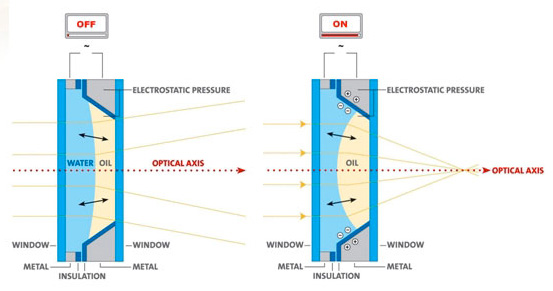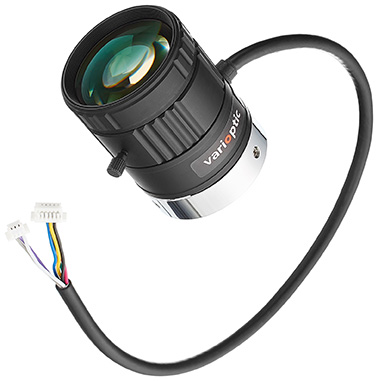Variable liquid lenses are an exciting new technology in the industrial sector. They’re faster, smarter, more durable and use less power than previous auto-focus lenses.
What are they? How do they work?
Liquid Lens Technological Features
 Liquid lenses are just that: lenses that utilize water and oil to shape and focus a camera lens. This is an emerging technology that is quickly proving its worth.
Liquid lenses are just that: lenses that utilize water and oil to shape and focus a camera lens. This is an emerging technology that is quickly proving its worth.
Variable liquid lenses are created through a process called electrowetting. A sealed cell contains two transparent liquids: water and oil. A Voltage is applied to the sealed cell, and the oil drop is shaped into a lens. Various voltages can change the focus of the lens.
They don’t sacrifice image quality, either. In fact, the module optical quality is primarily given by the associated fixed lens quality.
Why is This Technology Revolutionary?
Liquid lens technology can be used in a wide variety of applications. Industrial machine vision, barcode reading and biometric data capture are just a few of the many possible implementations.
 These lenses can work with small or large sensor systems at any resolution, and have a very simple design that can easily be incorporated in many vision systems.
These lenses can work with small or large sensor systems at any resolution, and have a very simple design that can easily be incorporated in many vision systems.
Variable focus liquid lenses are able to search for focus faster, and use advanced algorithms to further speed up focus search, even when focusing between large object distances.
They don’t sacrifice image quality, either. In fact, optical quality is consistently near the diffraction point, so associated fixed lens quality doesn’t suffer. Liquid lenses also have a stable optical axis and can work in any orientation.
Liquid lenses work in closed loop models as well as open loop models, where distance information can be determined by an external sensor. They are the first actuator of their kind to enable this open loop model.
Liquid lens technology is an exciting innovation. Variable focus liquid lenses are poised to make vision systems faster, smarter and more productive.
Learn more about liquid lens technology and if it is right for your application.
